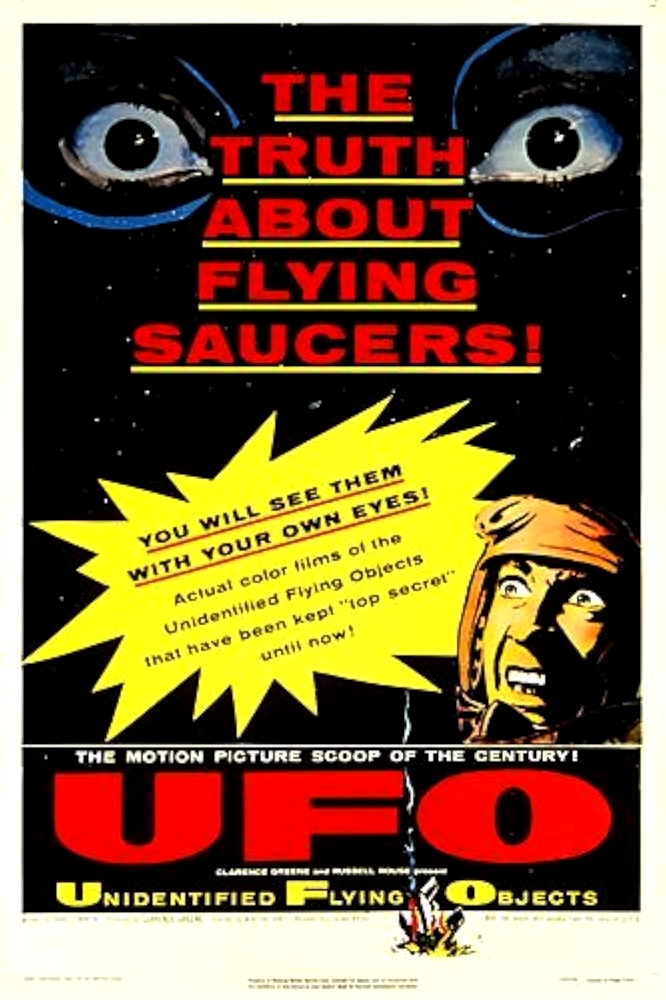
Crew
Director – Winston Jones, Screenplay – Francis Martin, Producer – Clarence Greene, Photography (b&w) – Howard A. Anderson, Ed Fitzgerald & Bert Spielvogel, Music – Ernest Gold, Conductor – Emil Newman. Production Company – Greene-Rouse Productions.
Featuring
Tom Towers (Albert M. Chop), Nicholas Marinara, Delbert Newhouse, Captain Willis Sperry, Wendell Swanson
Unidentified Flying Objects: The True Story of Flying Saucers is a fascinating quasi-documentary from the early days of the flying saucer phenomenon. The first documented sighting occurred in 1947 and the flying saucer craze exploded soon after that with hundreds of sightings in next-to-no time.
The film documents some of the early years and just how it affected the world – flying saucer-modeled hats, spacesuit helmets, planes dropping aluminium foil saucers as advertising, buildings with ads painted on the roof that say ‘Coffee Inside, Saucers Welcome’. This was before UFO phenomena was taken over by alien abductions, recovered memories, reports of the Blues and the Greys, gynaecological experiments and anal probes, Heaven’s Gate type cults, Erich Von Daniken and his Ancient Astronauts, and UFO interpretations of The Bible and The Pyramids. It is a fascinating snapshot from the era that shows both the public reaction and in retrospect documents just how the phenomena have changed with the times.
The film is a dramatisation of the experiences of Albert Chop, a journalist who became a civilian press officer for The US Air Force and was responsible for dealing with the reports and became convinced there was ‘something’ there. The film tells his story, where he is played by reporter Tom Towers, mixing it with interviews and actual saucer film footage. Dramatically, the documentary approach makes for a dull film. Sometimes it is too documentary-like, even going so far as to detail mundane details such as Chop’s son’s visits to the doctor.
Moreover, all that the UFO encounters consist of is people in radar control towers having conversations with pilots who are only describing what they seeing. With everything of interest that happens actually taking place off-screen and intercut with control tower doubletalk, the dramatic effect is rather stultifying. Indeed, all the drama is something only ever carried by the voice-over narration, never the accompanying visuals. The dialogue is forced – it doesn’t feel naturalistic and like something a person would ever say. Even the people in the interview scenes seem awkward and ill at ease.
That said, it is an awkwardness that nobody could ever fake. In both the plodding dramaticism and its amateurishness, the film actually makes a stronger case for something there than many more polished later documentaries do. The dramatic dullness of it aside, the documentary does keep to the facts, rather than leap off into the melodramatic sensationalism of much of the media articles and public hysteria that the media coverage it quotes does. It never adds any wild stories about Little Green Men, it just charts a phenomena with a patient rationalism and an adherence to the strict facts and admits it has no solutions. That alone gives it a sober groundedness that is welcoming amid the nonsense that would come later and push the study of UFO phenomena into a fringe ‘science’. The film does screen two pieces of film reportedly of UFOs, although these are disappointingly brief (a matter of seconds long) and unremarkable.